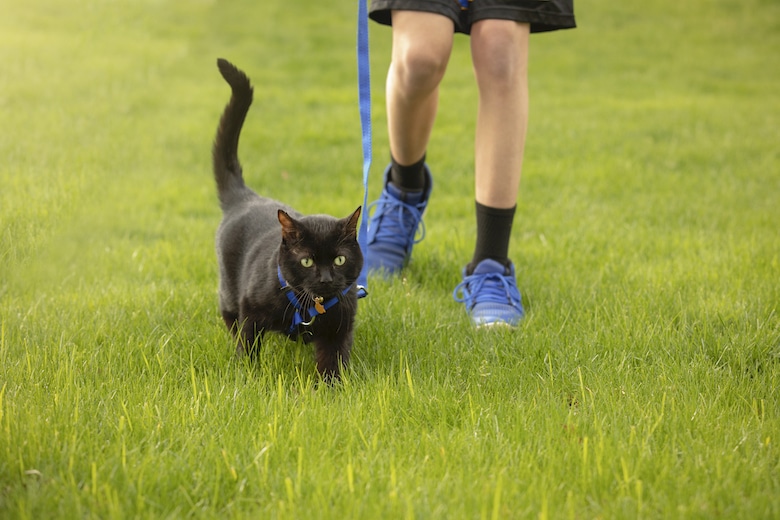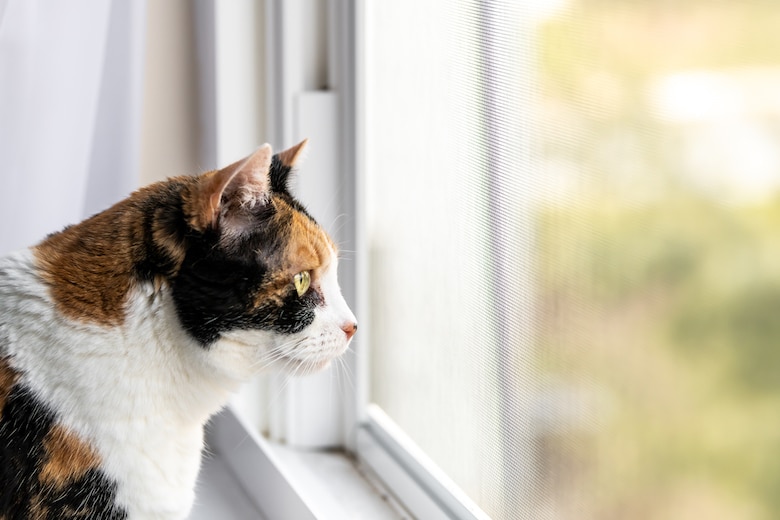Keeping cats indoors protects them from predators, cars and diseases, according to The American Veterinary Medical Association. Because they have natural hunting instincts, cats also prey on birds and other small wildlife, which can harm the ecosystem. But it’s hard to watch Kitty sit at the window, staring and chirping at the birds, and not want to give her a taste of the outdoors she desperately craves.
“We know that cats who are kept indoors are less at risk for disease and injury and live longer, but, without appropriate consideration of their needs for play … cats may become bored or frustrated with the indoors-only lifestyle,” says Dr. Mikel Delgado, a certified cat behavior consultant, who is on-staff at Smalls. “A happy compromise is giving your cat safe and controlled access to the outdoors.”
Dr. Delgado offered tips to make your indoor cat’s exposure to the outdoors a breeze.

Catios
As the name suggests, catios are like patios — but enclosed to keep Kitty from roaming too far from home. “[They] are completely secure and give your kitty a chance to enjoy the fresh air and sunshine.” Cat parents can craft a catio themselves or purchase one. “I always recommend having a cat flap or entryway [that connects to the house] that allows your cat to come in if they choose. Even better is building a catio large enough that you can enjoy it with your cat.”
Related: All the Cool Cats Want Catios
Cat-Proof Fencing Systems
These systems completely enclose a yard and provide cats more room to roam while also keeping other kitties out. To keep it safe, first make sure your current fence is secure and does not have holes or loose boards. “That is the base of your cat-proof fencing system, so you need to start with a good foundation.” Dr. Delgado suggests going to a commercial product designed to keep cats in, such as the Purrfect Fence or Cat Fence In systems.”These products are designed with the principles of animal containment in mind – based on how zoos have managed to keep animals in their enclosures.”

Photo: sdominick / Getty Images
Walk Your Cat
Fido shouldn’t get to have all the fun. Though difficult and not for every kitty, some take well to harnesses and leads. Find a cat harness, like the Kitty Holster. “[Do not use] a leash/lead attached to a cat collar. Cats have delicate necks, and it’s not safe to put a strain on their neck.” Be patient with Kitty — while she may be dying to get outside, a harness will be new for her. “You can place the harness on them for just a few seconds at first, give them treats, then take it off. Gradually increase their time wearing the harness.” Dr. Delgado recommends limiting walks to yards. “There are a lot of unknowns beyond your property — dogs, bicycles, loud noises. If your cat were to panic and escape, you don’t want them far from home … If your cat is panicked — trying to bolt away, panting, trying to hide — and it doesn’t improve after a few visits, your cat may not be a good candidate for harness time.”
Cat Strollers
Your cat may think she’s a ferocious predator, but she’s a baby to you — make it official by getting her a set of wheels. Like harnesses, give Kitty a chance to get used to it by letting her sniff it inside. “Leave it set up in your home with some bedding and treats inside, and they will likely want to investigate it on their own.”
Dr. Delgado says the most important thing to look for in a stroller is that it is completely secure. “Your cat can squeeze through a very small space, so it is critical that your pet stroller encloses your pet without any potential escape hatches. There should be zipped enclosures, with plenty of strong mesh.”
Dr. Delgado recommends PetGear strollers because their large, shock-absorbing wheels can make for a smoother ride.
A Note About Safety
Delgado advises ensuring a cat is microchipped — even if she is indoor-only. “Many cats get lost accidentally, and we know that microchips increase the chances of a lost pet making their way back to their family.” Also, cats with exposure to the outdoors should receive flea/parasite preventives, even if they will be enclosed in a catio. “Fleas, ticks, heartworm and other common parasites can not only hitchhike on your cat into your home. They can cause your cat to become ill. The effects of these parasites can range from irritating (flea bites) to downright deadly — heartworm can be fatal in cats.”
Top photograph: Photo: ablokhin / Getty Images
Read Next: 5 DIY Projects You and Your Kids Can Make for Your Cats
